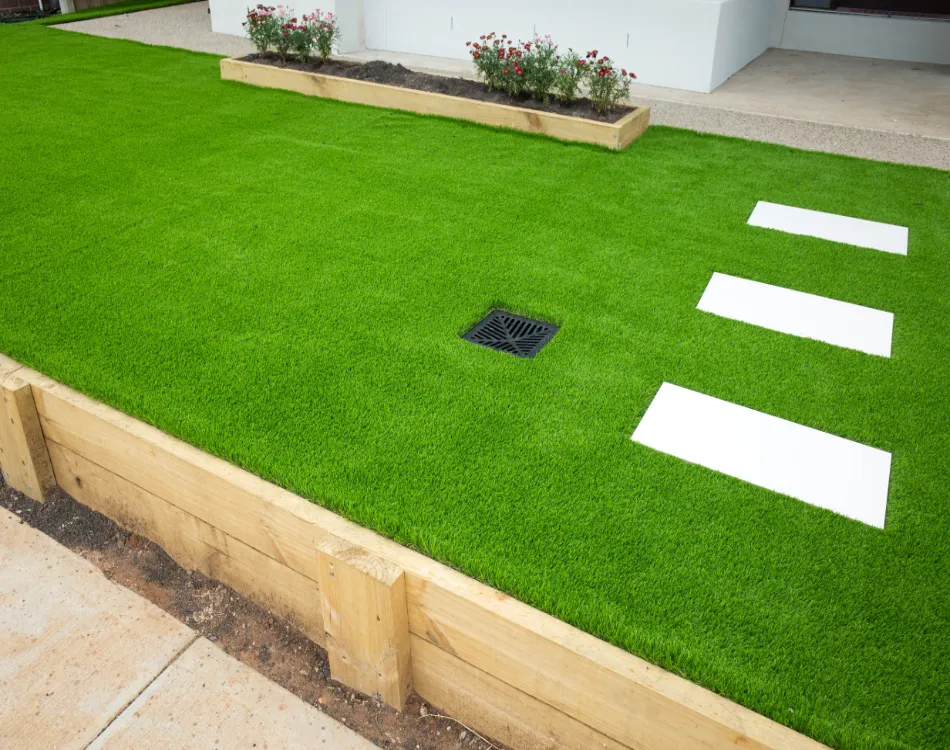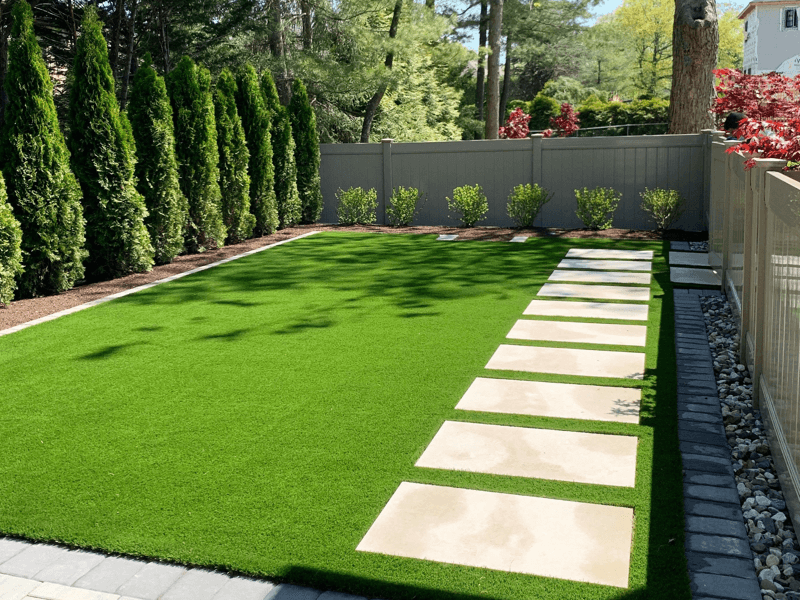Tailored Turf Installation Phoenix AZ for Residences, Companies, and Recreational Spaces
Tailored Turf Installation Phoenix AZ for Residences, Companies, and Recreational Spaces
Blog Article
Delve Into the Environmental Advantages of Opting for Artificial Grass Solutions
The adoption of man-made grass options offers an engaging chance to attend to pressing environmental challenges. By substantially minimizing water use and lessening the application of harmful chemicals, these alternatives not just advertise lasting landscape design however likewise safeguard local communities. Furthermore, the lower carbon footprint related to decreased upkeep tasks adds to a more sustainable approach to land management. However, the ramifications of these advantages extend past plain preservation efforts, questioning concerning their long-lasting impact on environment preservation and total environmental balance. Discovering these dimensions exposes a complex interplay worth considering.
Water Preservation Conveniences
One of the most substantial benefits of man-made grass is its ability to preserve water. In comparison, man-made turf does not need watering, dramatically lowering the total need for water resources.
By eliminating the demand for regular watering, fabricated turf adds to lasting landscape practices and assists mitigate the environmental effect of excessive water consumption. In addition, the conservation of water includes the reduction of runoff, which can cause soil disintegration and river contamination.
Additionally, the setup of artificial turf enables districts and property owners to allocate water resources more effectively, concentrating on important usages such as alcohol consumption water and farming. The change towards synthetic grass not just promotes accountable water usage but also aligns with broader environmental goals aimed at maintaining natural deposits.
As areas significantly focus on sustainability, the water conservation benefits of man-made grass provide a compelling situation for its adoption in domestic and industrial landscaping jobs.
Decreased Chemical Usage
The transition to synthetic grass considerably decreases the reliance on chemical treatments frequently utilized in natural yard maintenance. Typical grass management usually involves the application of plant foods, herbicides, and pesticides to advertise growth and control bugs. These chemicals can present risks to human health, regional wild animals, and the setting, adding to dirt and water contamination.
In contrast, synthetic grass eliminates the need for these dangerous materials. By decreasing the release of synthetic compounds into the environment, fabricated turf promotes healthier soil and water systems.
In addition, the absence of chemical overflow related to artificial turf installations helps protect local waterways from pollution, sustaining marine life and keeping biodiversity. Arizona turf. As communities increasingly focus on lasting techniques, choosing synthetic grass offers a feasible option that lines up with environmental conservation objectives. With this shift, building proprietors can take pleasure in rich green rooms without endangering environmental health and wellness, leading the way for a much more sustainable future
Reduced Carbon Footprint

Moreover, the setup of synthetic grass can result in considerable water preservation. Natural grass require significant amounts of water for watering, which not only includes in the carbon impact connected with water extraction and therapy yet likewise stress local water sources. On the other hand, man-made turf needs minimal maintenance, needing no watering, therefore dramatically reducing water use and its associated energy expenses.
In addition, the longevity of synthetic turf adds to its reduced carbon effect. With a life expectancy of approximately 15 years or more, the requirement for regular replacements is reduced, causing much less waste and reduced energy usage in production and taking care of typical lawn alternatives. Generally, synthetic grass provides a sustainable alternative for eco conscious landscaping.
Habitat Preservation
Habitat preservation is a critical consideration in the debate over landscape design choices, specifically when comparing man-made lawn to all-natural grass. Natural lawn yards usually call for substantial upkeep, including using herbicides, chemicals, and plant foods, which can negatively impact regional communities. These chemicals can seep right into the dirt and waterways, harming indigenous vegetation and fauna and interfering with regional environments.
Artificial turf removes the need for hazardous chemicals, thus securing neighboring wild animals and preserving the integrity of bordering ecosystems. The setup of artificial turf can lead to the conversion of previous yard areas right into more biodiverse landscapes, such as pollinator gardens or native plant areas, which can support local wildlife.
Ultimately, the transition to artificial lawn not just saves water and lowers maintenance initiatives but additionally cultivates an extra harmonious connection in between human tasks and the natural atmosphere, advertising habitat conservation at the same time.
Long-Term Sustainability
Long-term sustainability is an essential factor in examining the benefits of man-made lawn over typical grass yards. Among one of the most considerable advantages of artificial turf is its resilience; it can last up to 15-20 years with marginal upkeep, whereas natural turf requires frequent reseeding and substitute. This durability minimizes the need for constant resources, such as water, plant foods, and chemicals, which are necessary for keeping a healthy yard yard.
In addition, fabricated turf contributes to a reduction in carbon discharges associated with yard treatment devices. Traditional grass usually need gas-powered mowers, trimmers, and blowers, every one of which contribute to air contamination. Turf installation phoenix az. On the other hand, synthetic grass eliminates the requirement for such equipment, promoting their website a cleaner setting
Moreover, the manufacturing of synthetic grass progressively uses recycled materials, boosting its sustainability account. As suppliers take on eco-friendly practices, the ecological footprint of synthetic grass continues to decrease.

Final Thought
The fostering of fabricated turf solutions presents significant environmental benefits, his response consisting of significant water preservation, decreased dependence on dangerous chemicals, and a lower carbon footprint. Fabricated lawn help in protecting natural habitats by reducing land disturbance and advertising lasting sustainability through the usage of long lasting products. Collectively, these variables underscore the capacity of synthetic grass to add favorably to ecological health and wellness and offer a viable option to standard landscaping methods in a progressively resource-conscious world.
In comparison, man-made grass does not require watering, substantially decreasing the overall need for water resources. By reducing the launch of synthetic compounds right into the environment, synthetic lawn promotes much healthier soil and water systems.
In addition, the setup of artificial grass can result in substantial water conservation. In contrast, man-made turf needs marginal maintenance, calling for no watering, browse around this site thus significantly minimizing water use and its connected power expenses.

Report this page